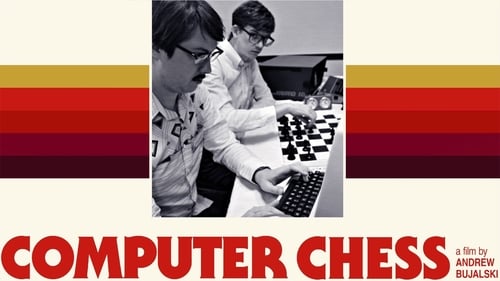lynda.com: C# Essential Training (2014)
lynda.com: C# Essential Training
Genre :
Runtime : 0M
Synopsis
C# is an object-oriented language designed by Microsoft and used by systems engineers, desktop programmers, and mobile app developers the world over. In these tutorials, David Gassner takes you through C#'s history, its core syntax, and the fundamentals of writing strong C# code. After explaining C#'s relationship to .NET and Windows, David shows how to install Visual Studio, a great IDE for developing in C#, and then dives into the language itself.

Join high school-aged girls from around the world as they try to better their community through technology and collaboration in this thrilling, heartfelt documentary. By 2017, the app market will be valued at $77 Billion. Over 80% of these developers are male. The Technovation Challenge aims to change that by empowering girls worldwide to develop apps for an international competition. From rural Moldova to urban Brazil to suburban Massachusetts, CODEGIRL follows teams who dream of holding their own in the world’s fastest-growing industry. The winning team gets $10K to complete and release their app, but every girl discovers something valuable along the way.

Follows the dramatic journeys of video game developers as they create and release their games to the world. It's about making video games, but at its core, it's about the creative process, and exposing yourself through your work.

A tale of how the great vision and epic failure of General Magic, the "greatest dead company in Silicon Valley", changed the lives of billions.

At the American Computer Chess Convention, enthusiasts gather to pit their programs against other computer chess programs and human players in a tournament for a grand prize of $7500.

A documentary about the world of software and the software makers. How do people from outside the industry see it and what do people from inside the industry think about regular computer users?

Stephen Hawking has warned that the creation of powerful artificial intelligence will be “either the best, or the worst thing, ever to happen to humanity”. Inspired by Brian Christian’s study The Most Human Human: What Artificial Intelligence Teaches Us About Being Alive, the filmmakers set out on an international investigation highlighting the effects of AI - scenes from our daily lives destructive and constructive.

Brilliant renegade hacker Mike Cleary and his crack team have finally debugged Guardian, his software program designed to block government cyber snooping. It's going to make them all rich. Now it's time to celebrate with a game of paintball, played in rugged wilderness far from the digital devices of their everyday lives. Not even an ominous encounter with a militia-style survivalist can dampen the weekend warriors' spirits. But someone is playing for keeps. Instead of getting hit with paintballs, soon they're getting splattered for real. As the body count climbs, Cleary discovers he's at the center of a worldwide web of deceit, aimed at gaining control of the program at any cost. Stalked with high-tech weapons, betrayed by trusted friends, only his programming savvy and a bizarre strategic alliance forged on the battlefield can keep him alive. If he fails and Guardian falls into the wrong hands, the game is over for everyone in the nation.

Use JavaScript to add new features and a richer, more compelling user interface on web pages. This course keeps current best practices and practical uses for JavaScript in mind, while covering syntax, working with the DOM, and developing and debugging across multiple platforms, devices, and browsers. Author Simon Allardice also shows how to progressively enhance and gracefully degrade web pages, and take advantage of the world of JavaScript libraries now available.

iOS app development is actually simpler than you might think, even if you're not an experienced programmer. In this course we bundle the most important concepts in iOS, explaining the development process in a visual way that people of any background can understand. No programming experience required! At the end, you'll have a finished app and a basic understanding of Xcode, the toolset for developing iOS apps; building blocks like variables, functions, and conditional statements; and interface design. You can also figure out if an iOS learning path is right for you, without a lengthy time commitment.

XML, or Extensible Markup Language, was designed to make information sharing and data interpretation easier. In this course, developer and author Joe Marini takes you through the basic rules of XML, explains its syntax, and covers more advanced topics such as styling your XML with CSS and XSLT and manipulating XML through the DOM. From integrating XML into your site to creating document type declarations and schema definitions, this course covers everything you need to not only get started with XML but also master it.

Widely used for both systems and applications development, the C and C++ programming languages are available for virtually every operating system and are often the best choice for performance-critical applications. In this course, Bill Weinman dissects the anatomy of C and C++, from variables to functions and loops, and explores both the C Standard Library and the C++ Standard Template Library. Features introduced in the C++11 standard (ratified in 2011) are also discussed.
![lynda.com: Up And Running [with java applications]](/assets/images/no-backdrop.png)
This course is an introduction to developing Java applications for various runtime environments. Author Todd Perkins explains how to configure the development environment, connect a web application to a MySQL database, and build a user interface with the Swing framework. The course also covers publishing applets in a web browser, working with XML data, and creating apps for Android devices.

Java Advanced Training shows developers how to expand their programming skills and get more out of Java. This course offers platform- and framework-neutral tutorials that can be used to build web, mobile, and desktop applications. Starting with advanced methods of defining Java classes and programmatic flow, author David Gassner goes on to describe the Java Reflection API and the Collections Framework; management of files and directories; test-driven development with advanced exception handling and reporting; and how to work with multiple threads.
![lynda.com: Foundations Of Programming [object-oriented design]](/assets/images/no-backdrop.png)
Most modern programming languages, such as Java, C#, Ruby, and Python, are object-oriented languages, which help group individual bits of code into a complex and coherent application. However, object-orientation itself is not a language; it's simply a set of ideas and concepts. Let Simon Allardice introduce you to the terms—words like abstraction, inheritance, polymorphism, subclass—and guide you through defining your requirements and identifying use cases for your program. The course also covers creating conceptual models of your program with design patterns, class and sequence diagrams, and unified modeling language (UML) tools, and then shows how to convert the diagrams into code.
![lynda.com: Foundations Of Programming [fundamentals]](/assets/images/no-backdrop.png)
This course provides the core knowledge to begin programming in any language. Simon Allardice uses JavaScript to explore the core syntax of a programming language, and shows how to write and execute your first application and understand what's going on under the hood. The course covers creating small programs to explore conditions, loops, variables, and expressions; working with different kinds of data and seeing how they affect memory; writing modular code; and how to debug, all using different approaches to constructing software applications. Finally, the course compares how code is written in several different languages, the libraries and frameworks that have grown around them, and the reasons to choose each one.

Join author David Gassner as he explores Java SE (Standard Edition), the language used to build mobile apps for Android devices, enterprise server applications, and more. This course demonstrates how to install both Java and the Eclipse IDE and dives into the particulars of programming. The course also explains the fundamentals of Java, from creating simple variables, assigning values, and declaring methods to working with strings, arrays, and subclasses; reading and writing to text files; and implementing object oriented programming concepts.





